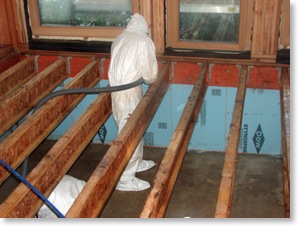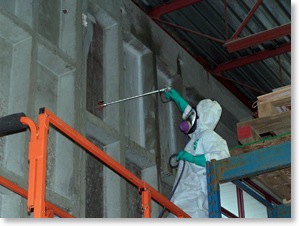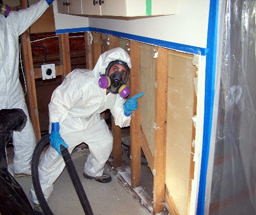Frequently asked Questions about Mould Remediation and Abatement (Mould Clean-up)
- How does your company differ from the other mould remediation / mould removal companies ? [+]
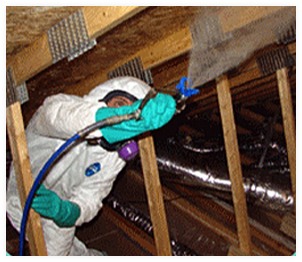
We advocate the use of the most advanced oxidative remediation technologies and products that exist today that allows us to save a structure, by remediating the mould instead of tear down and replace it. Unless there is structural damage done to the wood - it does not necessarily have to be replaced. The cost savings comes about from not having substantial replacement/rebuilding costs.
We have an on-site portable lab for quality control testing and analysis of our products and processes during several stages of the remediation work.
Qualified mould inspectors and certified mould remediators on-site managing your project.
The latest approved oxidative remediation products that have a low toxicity to humans, but greater effectiveness on the long term suppression of mould growth.
We assess the possibility of hidden mould being discovered during remediation and abatement process, and discuss this with the property owner prior to commencing the project on a plan of action, should this occur. - What types of buildings can be treated ? [+]
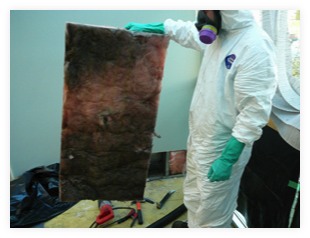
Virtually any building with mould
Residential homes, commercial buildings, industrial complexes
Schools, pre-schools, day care centers, playrooms, clinics and special care units, medical centers
Specialty treatments for Baby's rooms
Treatments suitable for crawlspaces, attics, unfinished basement and carpets
Mould preventative treatments for new homes and buildings under construction
Flood damage, fire damaged buildings - How do I choose a mould remediation and abatement company? [+]When property owners are looking for mould remediation companies - you need to become educated on the subject of mould. You have to ascertain which method that particular company uses - and which method best suits your own philosophies. There are several questions that the property owner should ask:
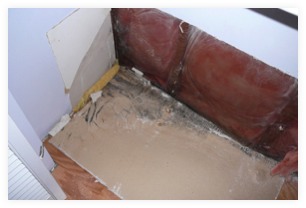
- Demolition and replacement, do they attempt to minimize reconstruction?
- Do they wash with toxic chemicals (usually metal based) not suitable for indoors ?
- Some use a combination of 1 and 2, reconstruction + toxic chemicals
- Does the company use chlorine bleach in its process ? ( professional companies don't)
- Can the company offer a guarantee ?
- Does the company restore items like carpets, upholstered furniture, curtains - or do the just recommend disposal and replacement ?
- Does the company provide a full written report on the scope of work that has to be preformed before the job begins ?
- Can the company also treat the crawlspace ? Often the source of the problem - many companies do not .
- Do they have products that are safe to use in an HVAC system - or do they just recommend a filter replacement ?
- Does the company have experience with contaminants other than mould ?
- Can the remediation company identify if there is more than one cause to a problem, or is their experience limited to water intrusion? Not all allergic or sick house syndromes are caused by mould or mould spores alone. Bacterial infections, hydrocarbon (leaks from heating oil tanks), sewage problems from septic problems/backups ( often cause a combination of problems mould + bacterial) can often be plaguing older homes and buildings. Do they have the knowledge to recognize and treat it ?
- Does your remediation company offer you confidentiality ? We use unmarked vehicles on site and there is no release of information unless you authorize it.
- What can I expect a mould remediation and abatement company to do when they arrive at my property ? [+]
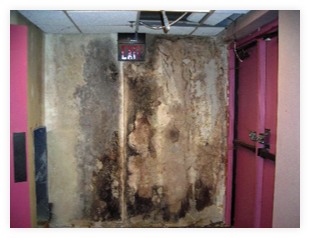
If this is our first visit to the property, a full inspection will be conducted. We bring a portable lab with us to every job site and do a full inspection. We use non-invasive testing where possible, but if the problem appears to be severe, then we recommend drilling a small hole to inspect the area. We then take air samples or grab samples from behind the wall. We ascertain if other contaminants are involved and try to find the source (or sources) for the problem. The "ground zero" so to speak.
Is the mould cause by condensation or moisture intrusion or both ? Fixing a leak may not address the only source of the problem.
How far has the mould spread?
Is there damage to the structural integrity or is the problem with staining and cosmetic issues?
Are there other associated problems, dust, other allergens such as high indoor pollen counts, asbestos ?
Then we give the homeowner a full report. This outlines, step by step, what needs to be done. This document can be used to get other companies to quote on doing the job, or decide if you want to do it yourself. See our page on Mould Inspection and testing for more details. - What is involved in the actual mould removal process ? [+]
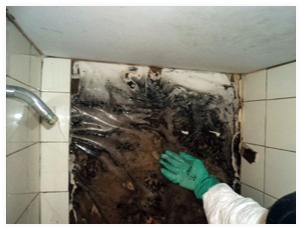
The latest in Mould Remediation Technology.
We use a 9 step process:- Identification - Inspection and identification of extent of the mould contamination on the property, then
- Containment and Negative Air - negative air and dehumidification equipment are positioned according to the protocols stipulated for that job. Containment areas are established, and the area is prepared for remediation process.
- Remove the odour - Our Oxidative remediation process uses a series of treatments that oxidizes mould, bacteria and viruses, removes the toxins and the mVOC's (the musty smell that mould gives off).
- Treat any other organics - During this first phase we identify and treat any other organic contaminants.
- Cleaning and removal of the mould from all contaminated areas
- Treatments - This is followed up by the use some of the newest, most advanced technology: microbiostatics washes to treat the area - any remaining mould stains are treated - the area is then dried.
- Full inspection, Quality Control - After the wash and drying - a full visual inspection and a microscopic examination is conducted of the problem/remediated areas. This gives our team of remediators the assurance to know that the area has been thoroughly disinfected.
- The final step involves fogging the entire area with provides an invisible, durable microbiostatic finish that protects surfaces against bio-deterioration by inhibiting microbial growth, preventing the mould from returning. This product will deliver effective inhibition of mould/mildew and algae, while killing and preventing the spread of common household germs; thus protecting surfaces, against deterioration, discolouration and odours. This process can only be applied to clean surfaces.
- Final Inspection - This is followed up with a final visual inspection and microscopic testing to ensure that all identified and treated areas are within specification, and that the odour has not returned and all signs of mould and mould staining have been removed. Relative humidity levels and moisture levels in treated surfaces are checked, any repairs for water intrusion are inspected.
- How do we make an appointment for a mould testing/inspection and remediation? [+]
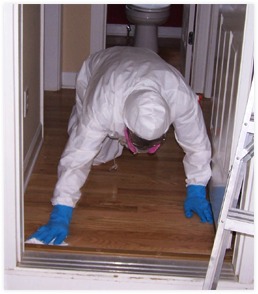
Call for an appointment.
Telephone: (778) 786-1552
Office hours: Monday to Friday 9AM - 7PM


